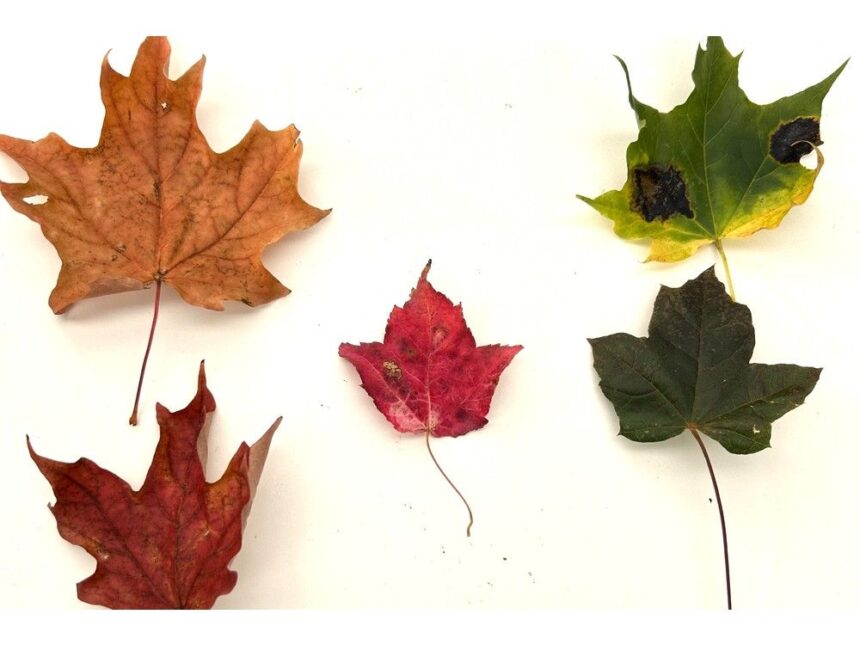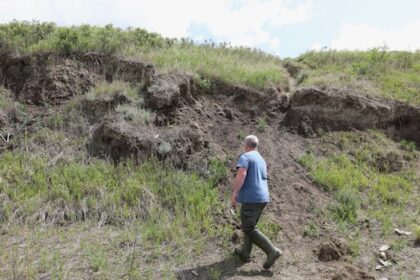Pictured are the Sugar maple (yellow – orange), the Red maple (red), and the Norway maple (green and purplish). Photo by ContributedArticle contentCOLCHESTER COUNTY – Our exceptionally dry, warm summer has extended well into the fall season. THIS CONTENT IS RESERVED FOR SUBSCRIBERS ONLY.Subscribe now to access this story and more:Unlimited access to the website and appExclusive access to premium content, newsletters and podcastsFull access to the e-Edition app, an electronic replica of the print edition that you can share, download and comment onEnjoy insights and behind-the-scenes analysis from our award-winning journalistsSupport local journalists and the next generation of journalistsSUBSCRIBE TO UNLOCK MORE ARTICLES.Subscribe or sign in to your account to continue your reading experience.Unlimited access to the website and appExclusive access to premium content, newsletters and podcastsFull access to the e-Edition app, an electronic replica of the print edition that you can share, download and comment onEnjoy insights and behind-the-scenes analysis from our award-winning journalistsSupport local journalists and the next generation of journalistsRegister to unlock more articles.Create an account or sign in to continue your reading experience.Access additional stories every monthShare your thoughts and join the conversation in our commenting communityGet email updates from your favourite authorsSign In or Create an AccountorArticle contentAs a result, leaves of hardwood – or deciduous trees, have remained longer than usual. However, despite the lack of frosty nights thus far in October, the colour of most leaves have progressed nicely. Article contentArticle contentThe change from green to other colours is an essential part of the annual growth of deciduous trees. The green colour in leaves is created by chlorophyl, the incredible compound in green plants that absorbs energy from the sun. Photosynthesis is the magical process that allows all of us oxygen users to survive by chlorophyl converting carbon dioxide to oxygen. Article contentArticle contentThe autumnal changing of leaf colours is primarily due to two groups of pigments found in the leaf tissue along with the chlorophyll. These are the carotenes – yellow pigment, and the anthocyanins – red pigment. Article contentAs fall days shorten and cool down, the growth rate of all plants slows down, as does the production of chlorophyll. As the level of chlorophyll in some tree species drops, the relatively stable carotene pigment becomes dominant which causes the leaves to turn yellow. You can see this in tree species such as sugar maple, birches, and poplars. Article contentCooling conditions and reduced sap flow promote the formation of anthocyanin, which is the red pigment. Warm, sunny autumn days encourage the formation of sugars in the leaves. Since sap flow is slowed down, the sugars become trapped, and anthocyanin is formed. When cool nights follow warm days, even more red pigment is formed, and a more intense red colour will result. Red autumn colouring occurs in trees having more acidic sap, such as red oak, red maple, sumac and burning bush. Trees with a more alkaline sap, such as white ash, will display purple, or plum coloured, leaves. Article contentArticle contentHard frosts simply speeds up the process of the leaves disconnecting from the branches. Sometimes you will see a tree has turned colour much earlier than other trees of the same species, or perhaps only one side, or a few branches of a tree have changed colour. Article contentThese signs are fairly common and may be due to stresses on the tree, or it may simply indicate that the tree is over-mature and past its prime or is damaged in some way. Stress can be the result of many variables such as our current drought, flooding, damage to the root system, improper use of fertilizer or pesticides, or perhaps by disease or heavy insect feeding. Article contentPremature leaf colouring is often a sign of overall tree decline. One can monitor the tree’s health over months to see if any treatment is necessary. Article contentForest Fact: One positive aspect of this summer’s drought is the fact that ticks were not very active. However, now that we are experiencing cooler and moist conditions, the ticks are out in big numbers in grassy and forest edge locations. Be on the look-out and remember to check yourself at the end of every day. Article content Beautiful fall colours as seen in Trenton Park. Photo by Richard MacKenzie /The NewsArticle contentArticle contentArticle content
How do leaves change from basic green to beautiful bright colours?











